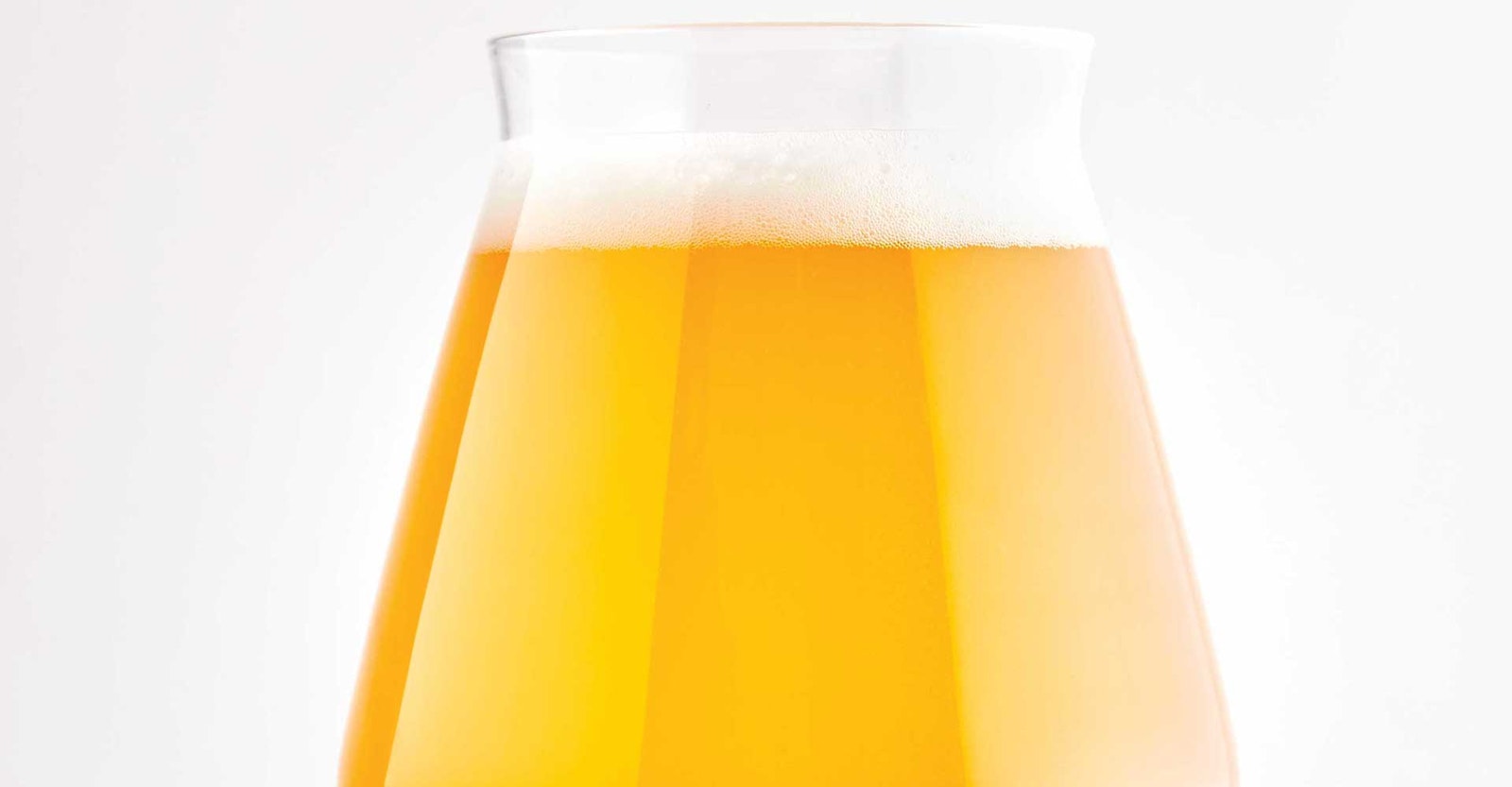All Access Subscribers can download the Beersmith and BeerXML version of this recipe. Subscribe today.
If possible, source some blueberry-blossom honey rather than a fruit-infused honey—the flavor it imparts is closer to tart apricot than blueberries. Despite the lack of actual fruit in this recipe, you should notice a pronounced stone-fruit character in the finished product.
For more brewing up some fruit character in your beer without using actual fruit, see Faking the Fruit.
ALL-GRAIN
Batch size: 5 gallons (19 liters)
Brewhouse efficiency: 72%
OG: 1.053
FG: 1.010
IBUs: 25
ABV: 5.8%
MALT/GRAIN BILL
8 lb (3.6 kg) pilsner
8 oz (227 g) Briess Victory
HOPS & ADDITIONS SCHEDULE
1 lb (454 g) blueberry-blossom honey at first wort
1 oz (28 g) Amarillo at 20 minutes [22 IBUs]
0.75 oz (21 g) Amarillo at flameout/whirlpool [2 IBUs]
0.5 oz (14 g) Styrian Goldings at flameout/whirlpool [1 IBU]
YEAST
Wyeast 1007 German Ale
DIRECTIONS
Mill the grains and mash at 152°F (67°C) for 60 minutes. Recirculate until your runnings are clear, then run off into the kettle. Add the honey, using the hot wort to dissolve it into solution. Sparge and top up as necessary to get about 6 gallons (23 liters) of wort, depending on your evaporation rate. Boil for 60 minutes, adding hops according to the schedule. After the boil, do a whirlpool step: Stir or recirculate to create a vortex, cooling to 170°F (77°C) if possible, then add whirlpool hops and steep 10 minutes. Chill wort to about 65°F (18°C), aerate the wort, and pitch the yeast. Ferment at 65°F (18°C) for 7–10 days, then allow free rise to room temperature and rest an additional week. Crash to 35°F (2°C), then package and carbonate to about 2.5 volumes of CO2.
BREWER’S NOTES
Honey: I find that it’s easy to overdo the flavor of honey. When added at whirlpool—which I used to do—I’d sometimes get a residual flavor of raw honey that I find off-putting. Added earlier, however, more of its secondary notes come through, which works perfectly to my taste. Having said that, there’s probably not a huge difference in the final output. So, give it a shot both ways and see what you think—or maybe try an iteration where you split the addition, adding some early and some late.
Whirlpool: If you don’t ordinarily whirlpool, you can get by just fine by adding the late hops at flameout and letting them rest in the beer during the cooling process.

